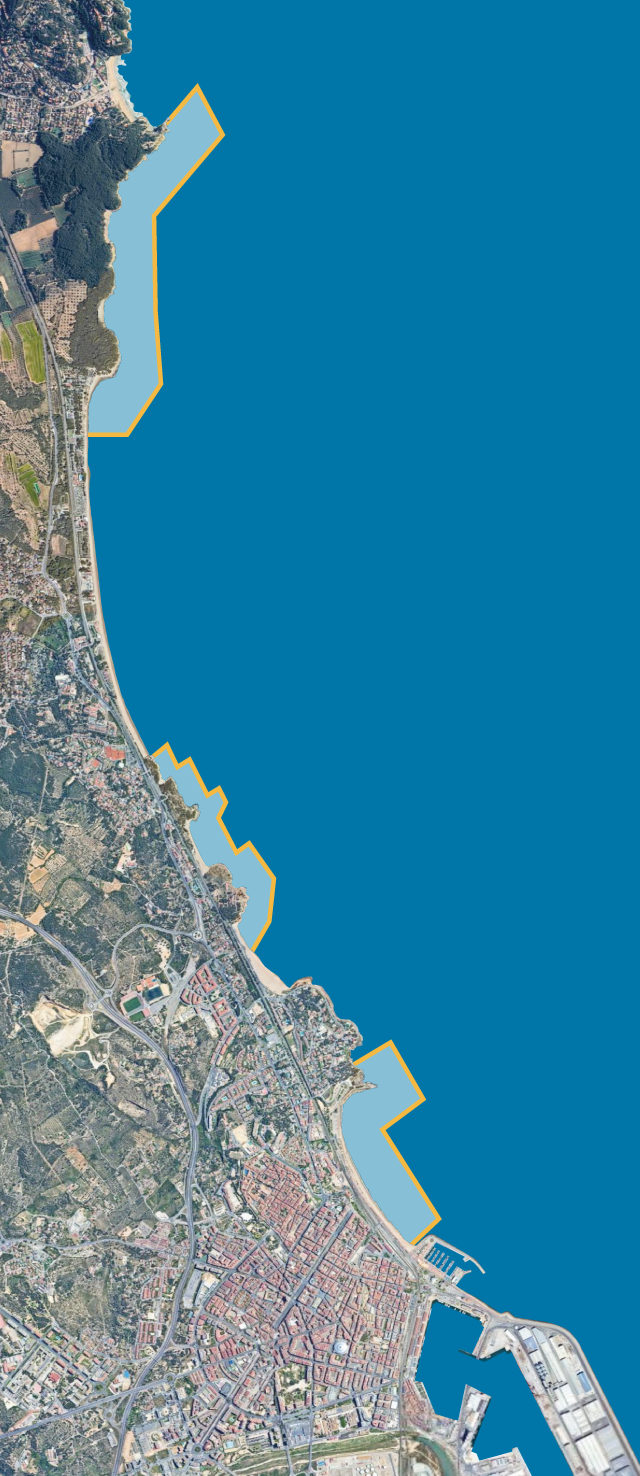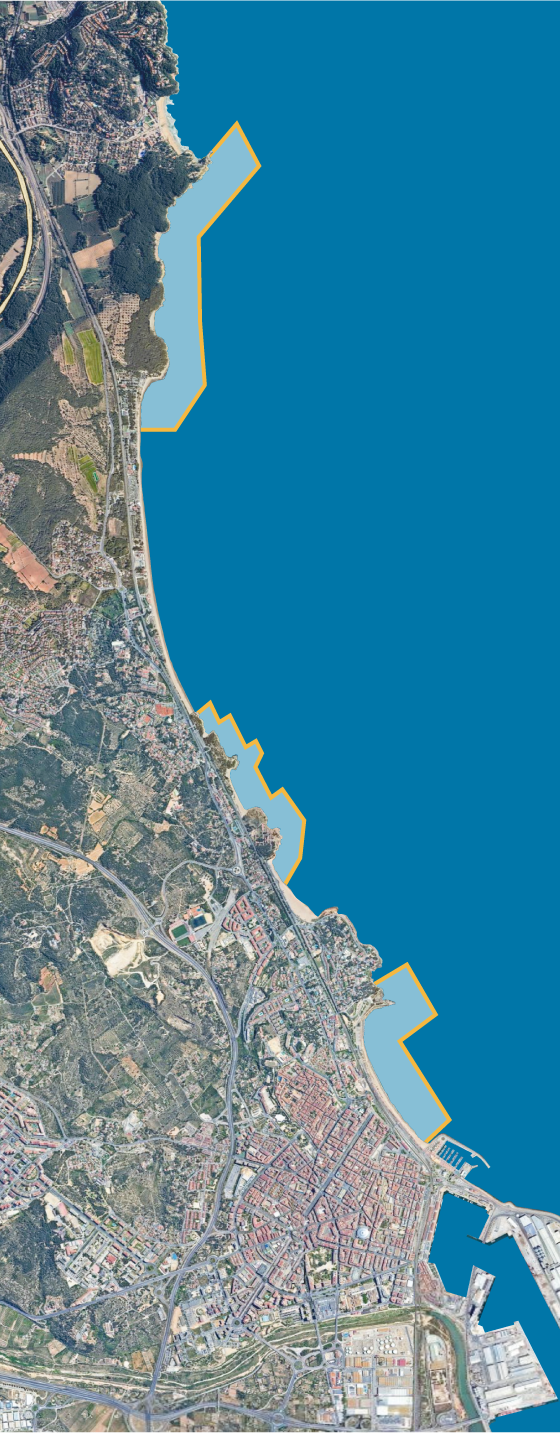The unprotected treasures hidden in the seabed of Tarragona
The demarcation is home to the only marine reserve in Catalonia and one of the largest posidonia meadows.


TarragonaThe Tarragona coast enjoys international fame for its beaches and its cuisine, but underwater it holds almost unknown treasures that must be protected. Right in front of Coma-ruga lies, in fact, the only Marine Reserve in all of Catalonia (there are 12 in the entire country). This is the Masía Blanca, a very important refuge for some endangered species that occupies an area of 457 hectares. This small oasis, protected since 1999, "is full of life," explains Laura Sánchez Vila, a marine biologist with the Oceánicos association, which has state accreditation to organize tours with snorkel in this area.
"One day I thought I saw a shark, but when I looked more closely, I realized it was a grouper! It was as fat as a person," the biologist recalls. They've even spotted five outside the reserve, off Sant Salvador beach. "La Masía Blanca isn't just a reserve; it's also a connector that reaches all the way to Torredembarra," she explains. They're sure to come here to feed or reproduce. In addition to these species, you can also find gorgonians, as well as coralligenous and posidonia, marine habitats that allow all kinds of life to hide. Recently, also from the Ministry of Agriculture, Fisheries and Food, which is responsible for their protection, La Masia Blanca is also an area rich in maërl banks, "rocky bars perpendicular to the coast with high biodiversity and interest as a breeding ground for species of fishing interest."
Laura Sánchez explains that marine reserves have three pillars: outreach, which is handled by her association, which organizes guided tours, as well as surveillance and signage, which are the responsibility of the state. These two tasks, according to Sánchez, are not carried out correctly and "are a very serious problem that needs to be improved." According to her complaint, a storm swept away some of the buoys that delimited this area, and for years it has been impossible to guarantee its protection. "We even saw boats anchored inside the reserve, and once I was almost run over by a jet ski," the biologist laments.
Beyond Masía Blanca, continuing south along the Mediterranean coast, the Tarragona coast hides another corner of great natural wealth: the southern coast of Tarragona. This space, despite not having a name as evocative as Masía Blanca, is also vitally important for many species and for marine biodiversity. Jaume Folch, biologist and professor in the Department of Biochemistry and Biotechnology at the URV, has been studying it for a long time, both from his office and underwater. "The treasure we have in this particularly rich area are the posidonia meadows, irreplaceable superorganisms, some of which are over 1,000 years old, that capture CO2," Folch said.2 naturally and which also function as ecosystems where the fish we later buy at the market are raised," he explains. The southern coast of Tarragona begins in Mont-roig del Camp and continues south until reaching L'Ametlla de Mar. All of this is a natural area within the European Natura 2000 protection network and is considered. However, neither of these two considerations implies any type of protection. "The threats we face are very significant, but we are not aware of it because it is an ecosystem that we do not know," explains Folch, and gives a devastating example: "There are many people doing many things in the water; we have 30,000 recreational boats and tourism that does what it wants. By September, there's not a single octopus left, because visitors in floral bathing suits have taken everything they wanted."
For Folch, it's not about banning swimming. He assumes that protection should allow other activities, but calls for "rational use of the space, such as no anchors" or no overcrowding.
Folch is part of the TecnATox research group, and for years they have been inventorying the meadows that exist from La Mora beach (Tarragona) to L'Ametlla de Mar, with the goal of providing sufficient information for the authorities to agree to protect this marine treasure. "We try to convince them to create mini-reserves, some kind of safeguard," he explains. Part of the documentation of this treasure is already in his book. The sea of Tarragona, published by the URV and with which you can appreciate this natural heritage of Tarragona.
One of the positive examples they have on the table, and which they want to use to seduce the rest of the municipalities, is what Cambrils has done with Cavet beach, where all fishing activity is prohibited, whether with a rod, harpoon, or from boats. Folch's working group has prepared different maps with marine areas that should be protected and they hope to be able to convince the municipalities, starting with that of Tarragona, to imitate the Cambrils model. These protected zones off the coast "would be a good start" to guarantee the survival of these marine treasures of Tarragona.
The Catalan Society of Biology in Southern Catalonia has organized a workshop This April 24th, at the Port of Tarragona, with scientists, technicians, AI experts, architects, social movements, and professionals from the blue economy to agree on sustainability proposals "for a coastline that is at its limit."



